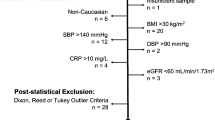Abstract
Preanalytical errors constitute about 40–65% of laboratory errors, of which 60% are due to hemolysis. This leads to imprecise reporting and misinterpretation of the actual concentration of analytes. Hence the aim of this study was to estimate the extent of different degrees of interference by visible hemolysis. 25 hemolysed samples along with their fresh unhemolysed sample were studied. Hemolyzed serum was mixed with unhemolyzed serum in predefined serial ratios from 100%, 70%, 50%, 30% and 10% to achieve different grades of hemolysis. Each dilution was analysed for BUN, creatinine, uric acid, phosphorus, Na, K, total protein, amylase, lipase, LDH, tacrolimus and methotrexate. Percentage difference of each dilution of the hemolyzed sample as compared to the unhemolyzed sample was calculated and considered acceptable only if less than TEa. It was observed that Percentage difference of BUN, creatinine, amylase and lipase in all dilutions of hemolyzed samples were within TEa while phosphorus, Na, K, total protein and LDH were beyond the acceptance criteria. Hence It was concluded that it may be safe to analyse a hemolysed sample for BUN, creatinine, amylase, lipase, tacrolimus and methotrexate while uric acid may be estimated in a moderately hemolysed sample. Phosphorus, sodium, potassium, total protein and LDH must never be analyzed in any hemolysed sample.

Similar content being viewed by others
References
Plebani M, Carraro P. Mistakes in a stat laboratory: types and frequency. Clin Chem. 1997;43:1348–51.
Frank JJ, Bermes EW, Bickel MJ, Watkins BF. Effect of in vitro hemolysis on chemical values for serum. Clin Chem. 1978;24(11):1966–70.
Shah JS, Soon PS, Marsh DJ. Comparison of methodologies to detect low levels of hemolysis in serum for accurate assessment of serum microRNAs. PLoS ONE. 2016;11(4):1–12. e0153200. https://doi.org/10.1371/journal.pone.0153200.
Dimeski G. Interference testing. Clin Biochem Rev. 2008;29(1):S43–8.
Talke H, Schubert GE, Wchnschr K. Enzymatic urea determination in the blood and serum in the warburg optical test. 1965;43:174.
Jaffe M. Estimation of creatinine by the Jaffe Reaction. Z Physiol Chem. 1886;10:391–400.
Fossati P, Prencipe L, Berti G. Use of 3,5-dichloro-2-hydroxybenzenesulfonic acid/4-aminophenazone chromogenic system in direct enzymic assay of uric acid in serum and urine. Clin Chem. 1980;26:227–31.
Fiske CH, Subbarow Y. The colorimetric determination of phosphorus. J Biol Chem. 1925;66:375.
Scott MG, Legrys VA, Hood JL, Electrolytes and Blood Gases, Burtis CA, Ashwood ER, Bruns DE. Tietz textbook of clinical chemistry and molecular diagnostics. 5th ed. Philadelphia: Elsevier Health Sciences; 2012. p. 807–835.
Hortin GL. Aminoacids, Peptides and Proteins, Burtis CA, Ashwood ER, Bruns DE. Tietz textbook of clinical chemistry and molecular diagnostics. 5th ed. Philadelphia: Elsevier Health Sciences; 2012. p. 509–563.
Bais R, Panteghini M. Enzyme and Rate Analyses, Burtis CA, Ashwood ER, Bruns DE. Tietz textbook of clinical chemistry and molecular diagnostics. 5th ed. Philadelphia: Elsevier Health Sciences; 2012. p. 355–378.
Snozek CLH, McMillan GA, Moyer TP. Therapeutic Drugs and Their Managment, Burtis CA, Ashwood ER, Bruns DE. Tietz textbook of clinical chemistry and molecular diagnostics. 5th ed. Philadelphia: Elsevier Health Sciences; 2012. p. 1057–1108.
Lippi G, Blanckaert N, Bonini P, Green S, Kitchen S, Palicka V, et al. Haemolysis: an overview of the leading cause of unsuitable specimens in clinical laboratories. Clin Chem Lab Med. 2008;46:764–72.
Abd Elrouf MB, Amanullah M, Zaman GS. Interference of hemolysis in the estimation of plasma aspartate aminotransferase, potassium and phosphate. J Invest Biochem. 2014;1(1):12–5.
Grafmeyer D, Bondon M, Machon M, Levillain R. The influence of bilirubin, haemolysis and turbidity on 20 analytical tests performed on automatic analyzers. Eur J Clin Chem Clin Biochem. 1995;33:31–52.
Shah JS, Soon PS, Marsh DJ. Comparison of methodologies to detect low levels of hemolysis in serum for accurate assessment of serum microRNAs. PLoS ONE. 2016;11(4):1–12. https://doi.org/10.1371/journal.pone.0153200.t001.
Lippi G, Cadamuro J, Meyer AV, Simundi AM. Practical recommendations for managing hemolyzed samples in clinical chemistry testing. Clin Chem Lab Med. 2018;56(5):1–12.
Author information
Authors and Affiliations
Corresponding author
Ethics declarations
Conflict of interest
Dr.Seema Bhargava, Dr.Parul Singla, Dr.Anjali Manocha, Dr.Mamta Kankra, Dr.Anisha Sharma, Dr.Ashok Ahirwar, Ms. Rachna Ralhan, Mr. Udhavanand Thapliyal and Ms. Preet Mehra declare that they have no conflicts of interest.
Ethical Considerations
All procedures performed in this study were in accordance with the ethical standards of our institutional research committee and with the 1964 Helsinki declaration and its later amendments.
Informed Consent
Informed written consent was procured from all subjects.
Additional information
Publisher's Note
Springer Nature remains neutral with regard to jurisdictional claims in published maps and institutional affiliations.
Rights and permissions
About this article
Cite this article
Bhargava, S., Singla, P., Manocha, A. et al. The Hemolyzed Sample: To Analyse Or Not To Analyse. Ind J Clin Biochem 35, 232–238 (2020). https://doi.org/10.1007/s12291-019-00821-4
Received:
Accepted:
Published:
Issue Date:
DOI: https://doi.org/10.1007/s12291-019-00821-4



